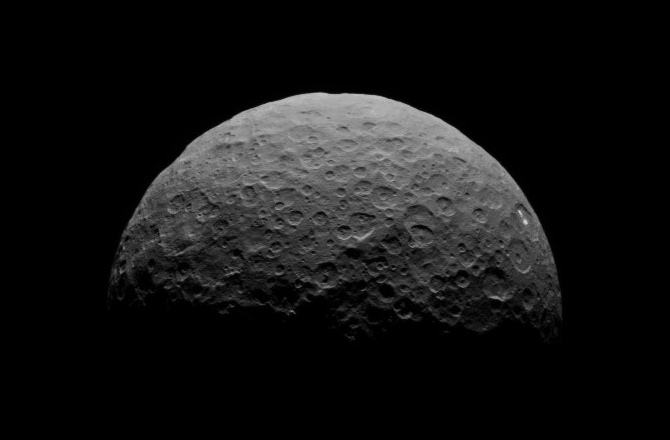What Are Ceres' Mysterious White Spots? You Decide!

Ever since NASA's Dawn spacecraft arrived in the vicinity of dwarf planet Ceres, the world has been abuzz with theories as to what those mysterious white spots may be. Now, in an effort to further engage Dawn mission fans and have some fun along the way, NASA’s Jet Propulsion Laboratory (JPL) in Pasadena, Calif., has created a public poll asking what we think those enigmatic blobs are.
PHOTOS: Our Dwarf Planet Dreams are Coming into Focus
The mystery surrounding these spots is as interesting as it is confusing. Even NASA has admitted that, for now, they are far from understanding what their origins are.
ANALYSIS: Ceres' Mystery Bright Spots May be Ice Plumes
When initially arriving at Ceres, two conspicuous spots could be seen by Dawn. Presumed to be some kind of cryovolcanic feature, planetary scientists studying Dawn’s observations realized that there was no positive relief feature associated with the spots, hinting of the presence of a vent or crack. Cryovolcanism is still a possibility, but there are other ideas, including features such as reflective minerals or salt deposits.
As Dawn has entered its science orbit around the small world, no doubt the multiple white spots that are now known to dot the surface will become the prime focus of Dawn's instrumentation.
But for now, JPL wants to know what you think these mystery bright spots are. (Sadly, “Alien Solar Array” isn’t one of the options.
Breaking space news, the latest updates on rocket launches, skywatching events and more!
This article was provided by Discovery News.
Ian O'Neill is a media relations specialist at NASA's Jet Propulsion Laboratory (JPL) in Southern California. Prior to joining JPL, he served as editor for the Astronomical Society of the Pacific‘s Mercury magazine and Mercury Online and contributed articles to a number of other publications, including Space.com, Space.com, Live Science, HISTORY.com, Scientific American. Ian holds a Ph.D in solar physics and a master's degree in planetary and space physics.

